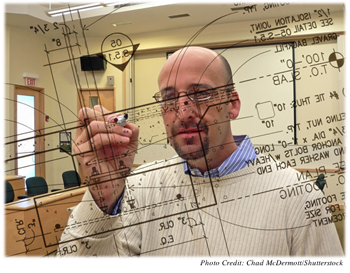
Chapter 1. Brain Development: Middle Adulthood
Synopsis
Brain Development: Middle Adulthood
Author

S. Stavros Valenti, Hofstra University
Synopsis
In this activity, you will observe changes that take place in the brain during adulthood and throughout the middle adult years. Animations will provide excellent visual aids to demonstrate the loss of brain volume and the thinning of gray matter and white matter that occur throughout middle adulthood. The activity also discusses how people experience improvements in aspects of their lives during the middle adult years.
REFERENCES
Kolb, B., & Whishaw, I. Q. (2001). An introduction to brain and behavior. New York: Worth Publishers.
Spear, L. (2000). The adolescent brain and age-related behavioral manifestations. Neuroscience and Biobehavioral Reviews, 24, 412-463.
The Brain in Middle Adulthood

Many people describe a more positive outlook on their lives between the ages of 30 and 65 — greater knowledge, improved relationships, more satisfying careers, or newfound leisure activities. Ironically, this increasing sense of fulfillment in middle adulthood appears in spite of senescence, the gradual decline in the optimum functioning of all bodily systems. The brain changes associated with senescence begin in emerging adulthood and continue throughout middle age and beyond.
Changes in Gyri and Sulci of the Cerebral Cortex

Starting in the early 20s and continuing through the life span, there is a gradual loss of brain volume as the gyri (“hills”) of the cerebral cortex become narrower and the sulci (“valleys”) become wider. This loss of brain volume is offset by an increase in the size of the ventricles, which are the inner chambers of the brain filled with cerebrospinal fluid.
Play the animation to view the loss of brain volume in the adult years.
Thinning of Gray and White Matter

One of the first signs of the aging brain is the thinning of the gray matter layer, where neurons are concentrated. This thinning is usually detectable in a person’s early 20s, but the process may start even earlier. In contrast, the white matter in the brain increases until about age 40 when it begins to decrease.
Play the animation to view brain changes of gray and white matter during the adult years.
Brain Changes and Behavior

Although there are clear signs of aging in the brain during middle adulthood, these changes do not seem to be associated with a drop in the quality of life at home or on the job. Some of the brain changes, such as the reduction in the number of synapses (gray matter), are part of an overall process of “fine-tuning” of the neural circuits. This fine-tuning leads to more efficient information processing.
There are many factors affecting a person’s thoughts, feelings, and behaviors. These factors include general health, knowledge and expertise, and motivation to perform. Researchers have much to learn about how health, experiential, and motivational factors interact with age-related brain changes in middle adulthood.
Play the animation to watch again some of the brain changes that occur during the middle adult years.
Microscopic Brain Changes
When observed under the microscope, the thinning of the gray matter is due mainly to a loss of neurons and a reduction in the number of synapses. The thinning of the white matter is due to a loss of axons and their myelin sheaths and a loss of glial (support) cells.
Play the animation to observe the thinning of gray matter and white matter during the adult years.

1.
What is your theory on how the thinning of gray and white matter might affect a person’s life during the middle adult years? What makes you think this?
Assessment: Check Your Understanding

2.
1. In general, middle adulthood is a time during which a person experiences a decline in cognition, relationships, and career satisfaction.
Assessment: Check Your Understanding

3.
2. The part of the brain that loses volume when gyri narrow and the sulci widen is called the:
Assessment: Check Your Understanding

4.
3. White matter in the brain increases until about age 40, but gray matter decreases during the early 20s.
Assessment: Check Your Understanding

5.
4. Gray matter loss is mainly due to a reduction in the number of neurons and:
Assessment: Check Your Understanding

6.
5. Consider the theory that you proposed on screen 5 for how brain development in middle adulthood can affect a person’s life. Explain how accurate your theory may or may not have been based on what you learned in the rest of the activity.
Congratulations! You have completed this activity.Total Score: x out of x points (x%) You have received a provisional score for your essay answers, which have been submitted to your instructor.